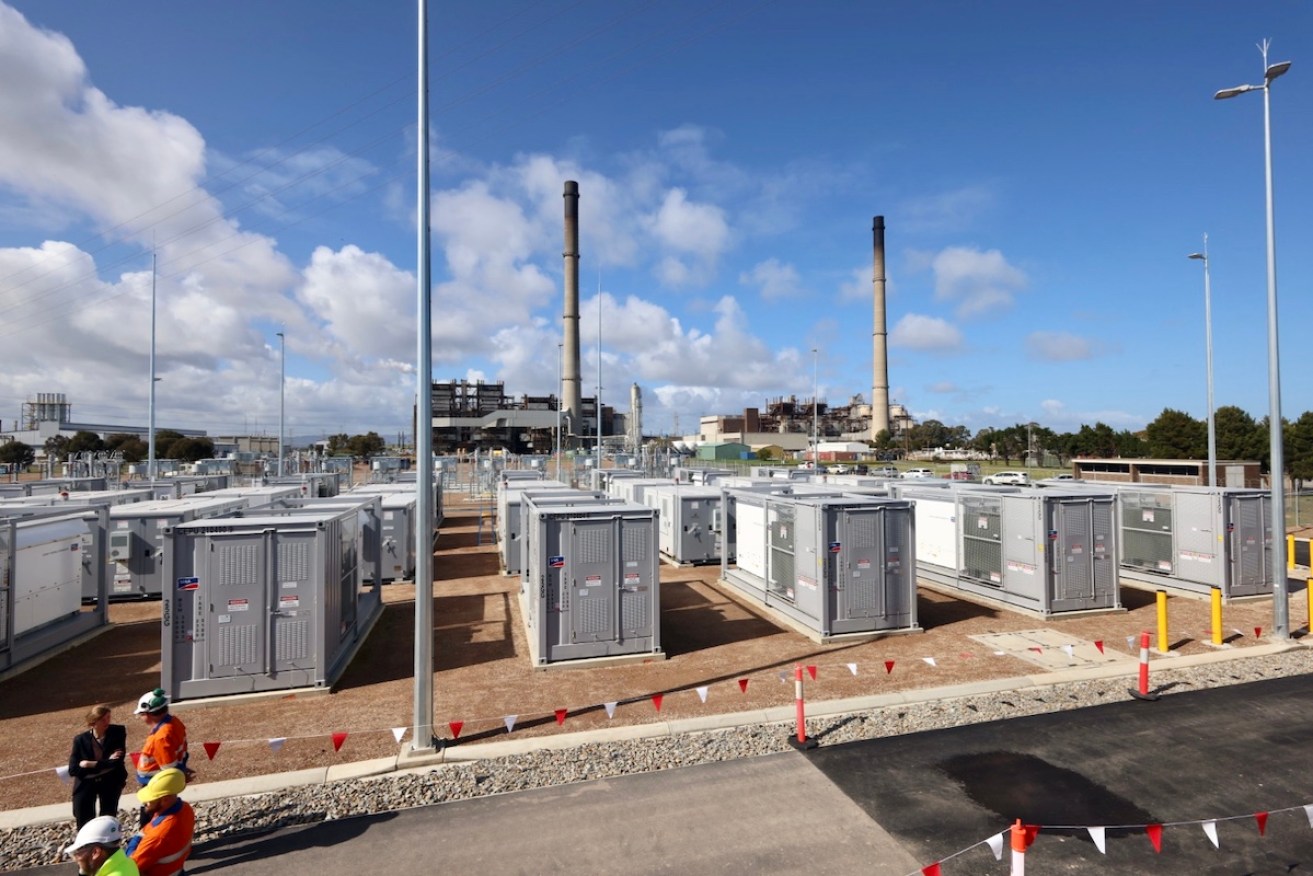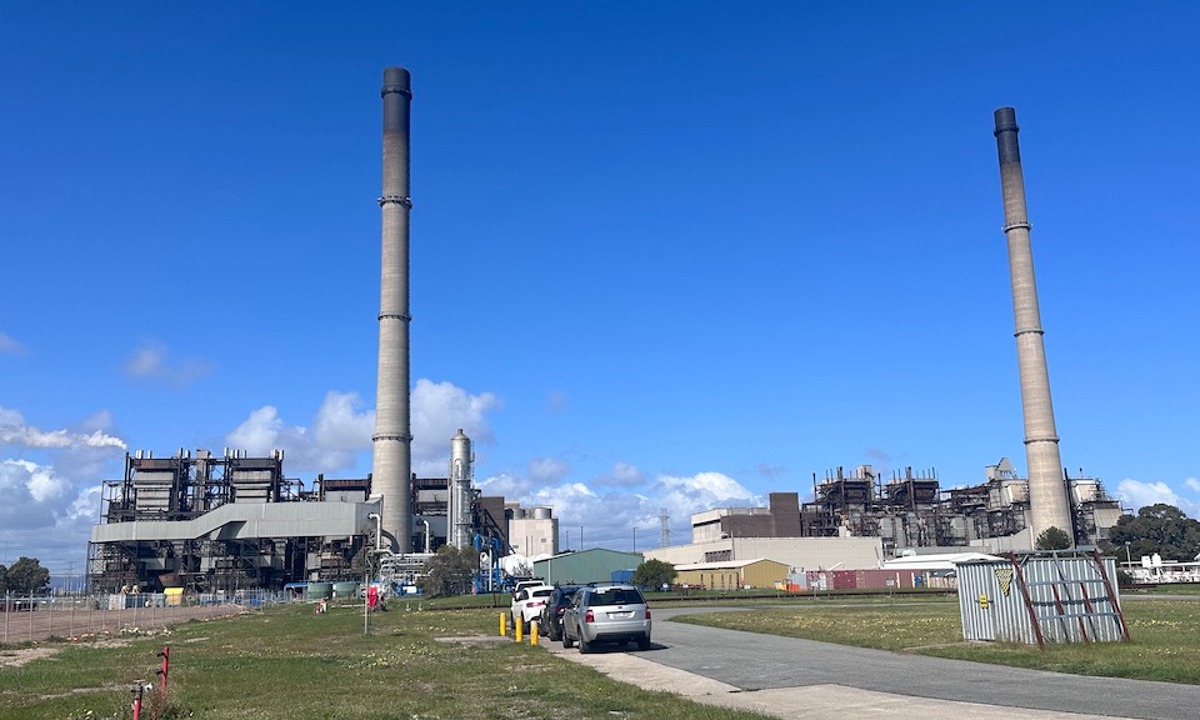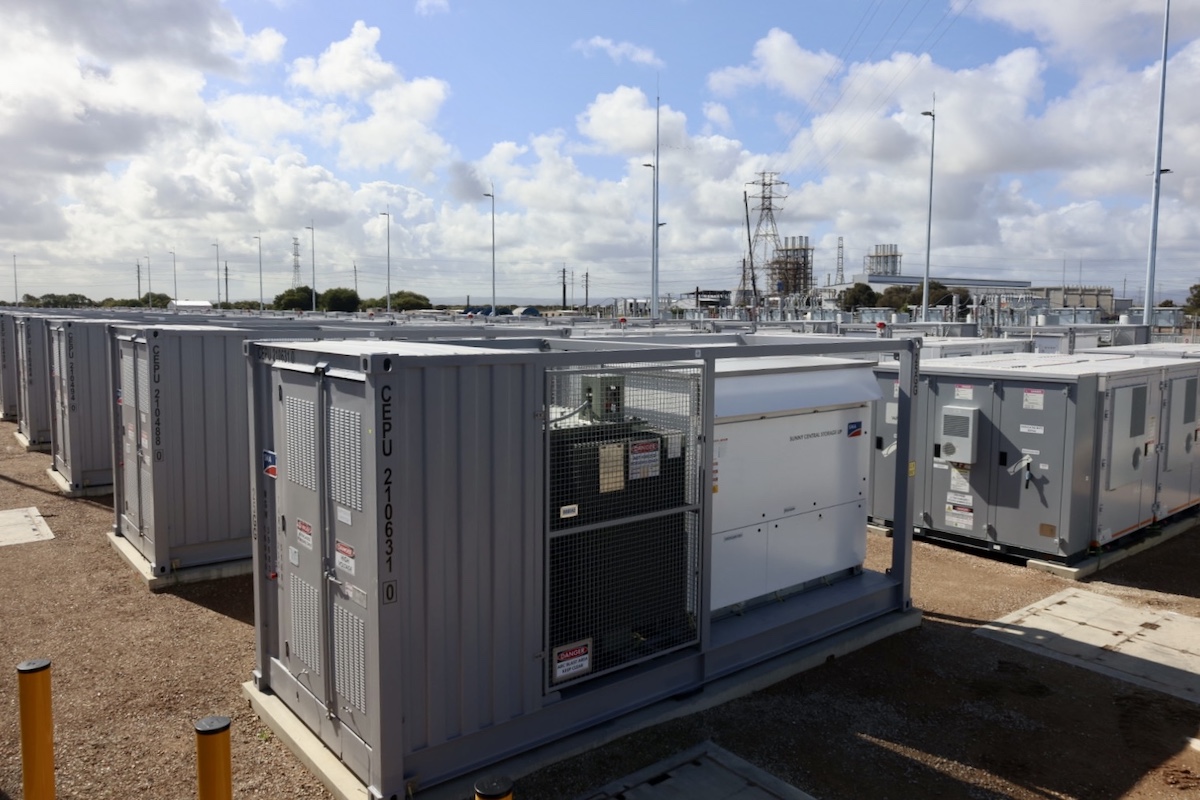Torrens Island transforms again
A new page has been turned in the history of Torrens Island as AGL establishes its grid-scale battery the size of a footy field.


AGL's big battery array at Torrens Island. Photo: Tony Lewis/InDaily
In the shadow of Torrens Island’s ageing smoke stacks lies row upon row of unremarkable grey containers housing enough power to electrify 75,000 homes for one hour.
On a space the size of the Adelaide Oval, the 250 MW grid-scale battery idly stores the energy generated by the thousands of solar panels on Adelaide rooftops until it is required to step in to stabilise the grid.
A terrible buzzing sound emits from the 218 battery cabinets that sit side-by-side on the west coast of Torrens Island which has housed some of SA’s most vital energy infrastructure projects since the ‘60s.
Established via legislative means in 1962, the Torrens Island Power Station is only accessible by a two-lane bridge and is tucked behind AGL’s security gates.
North of Wingfield, the island itself is an 11-minute drive from the Port Adelaide Shopping Centre and has been a quarantine station and a WWI internment camp. It’s also home to a conservation park, supporting mangroves, samphire and coastal dunes.
National Parks and Wildlife Service SA says 69 bird species of conservation significance make Torrens Island their home.
Its most recent purpose has been as a power station. In 1963 construction of ‘A’ Station commenced consisting of four generating units. It became operational in 1967, and nine years later it’s sibling stack ‘B’ Station became operational.
But AGL sees a new future for Torrens Island, marking a fresh chapter in the story of the teardrop-shaped island just north of Adelaide.

Torrens Island power stations ‘A’ and ‘B’. Photo: David Simmons/InDaily.
How did we get here?
AGL’s involvement with Torrens Island only commenced in 2007 when it swapped assets with Energy Australia – then called TRUenergy.
The deal saw AGL buy the power station for $417 million, while TRUenergy bought AGL’s Hallett Power Station in the state’s mid-north for $117 million.
At the time, the purchase was a “substantial investment” by AGL which said it “significantly bolsters AGL’s physical position in low carbon emission electricity generation”.
Notably, AGL said the power station had an “excellent remaining operating life of 25 years”.
As it would later turn out, Torrens Island ‘A’ Station would only have another 13 years left in its operating life. In September 2020, AGL began progressively closing the station and fully shut the plant down two years later.
Two months on, in November 2022, the company announced it would close Torrens Island ‘B’ Power Station on 30 June 2026, nearly a decade ahead of schedule. The company cited concerns about the plant’s “economic viability” due to the planned SA-NSW electricity interconnector.
This was little consolation to the 120 workers affected by the closure.
Now AGL is putting the towering smokestacks firmly into the rear-view and is charging full speed ahead into battery tech.

AGL’s big battery array at Torrens Island. Photo: Tony Lewis/InDaily
The big battery
The $180 million grid-scale battery was intended to ensure Torrens Island’s legacy in the South Australian energy space would continue.
When announcing the project in 2021, AGL highlighted how it hoped Torrens Island would continue to play a role in the state’s energy transition. At the time, it was estimated up to 50 local jobs would be created during the construction phase.
The battery is Australia’s second largest, SA’s largest, and was built by Wärtsilä – a Finish renewable energy technology provider – in just 18 months.
For AGL, the Torrens Island battery is another cog in its energy transition machine. The company has been building grid-scale battery storage around the nation, but Torrens Island is its first operational battery.
It is constructing another 50 MW battery at Broken Hill, and its largest will be a 500 MW ARENA-backed storage project at Liddell – another decommissioned power station.
In his speech at the opening of the Torrens Island battery, AGL CEO Damien Nicks said it was “just the beginning of what we’re doing” in terms of “our journey to transform the way we generate and supply electricity”.
As Torrens Island takes on a new life, so does AGL transition its business model.
“At AGL, we are targeting closure of our last thermal power station by the end of 2035,” Nicks said.
“We aim to replace that retiring plant by supplying our customer demand with approximately 12 gigawatts of renewable and firming capacity by 2036. For context, that is 48 times the capacity of this battery that we’re celebrating today and this is the second largest battery in Australia.
“This massive investment of up to $20 billion in new renewables and firming capacity represents one of the most significant decarbonisation initiatives underway in Australia.”
AGL’s desire to be a renewables leader does spell the end for the towering Torrens Island chimneys, which is “an important part of [AGL’s] portfolio, but it’s no longer fit for purpose in the modern grid” according to Nicks.
The battery is also the first step in the latest transformation of the Island.
“Our team is working on more projects and exploring emerging technologies right now for the site we are on, to transform Torrens Island into a low-carbon energy hub,” Nicks said.
“As we pursue these opportunities, we are very alive to the impact on our workforce,” he added, noting that the grey boxes behind him require far fewer men and women to operate than the decommissioned plants just south of the battery plant.
“We continue to work on bringing new business and new industries to really bring alive the Torrens energy hub plan that will create the future jobs for this site.”
Until then, the rows of grey containers will buzz night and day, and will step up to the plate when required.




